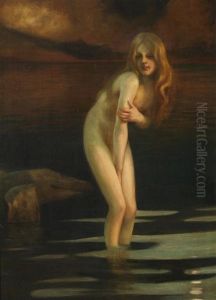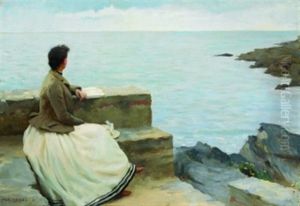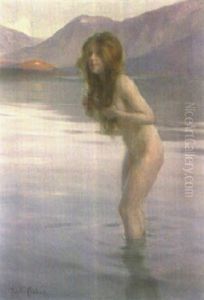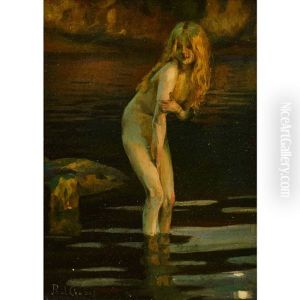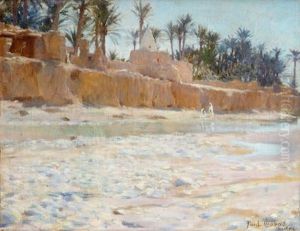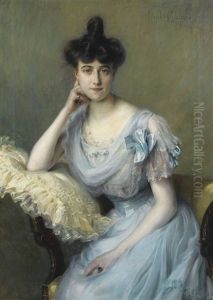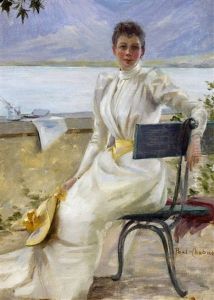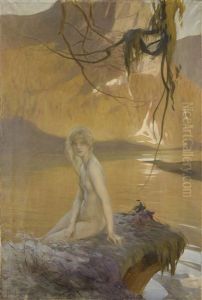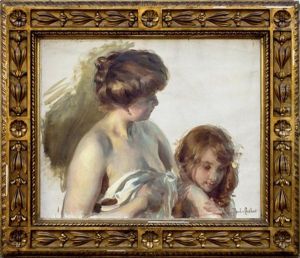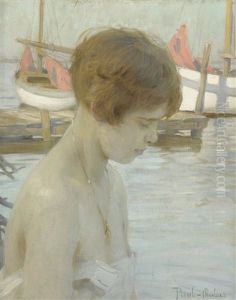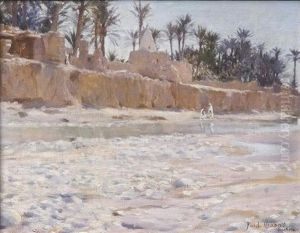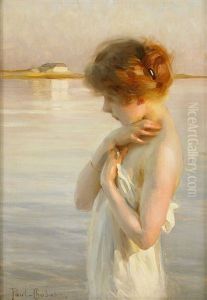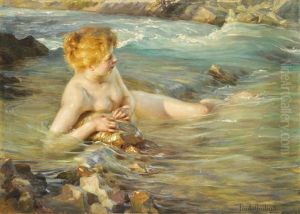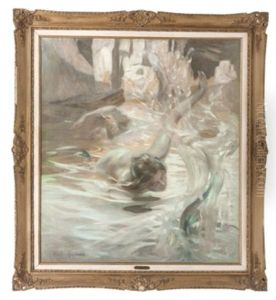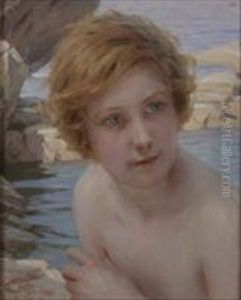Paul Emile Chabas Paintings
Paul Emile Chabas was a French painter born on March 7, 1869, in Nantes, in the Brittany region of France. He is best known for his work in portraiture and nudes that epitomize the grace and elegance of the Belle Époque period. Coming from a family with artistic inclinations, Chabas pursued his passion for art at a young age. He trained at the Académie Julian in Paris, studying under William-Adolphe Bouguereau and Tony Robert-Fleury, both of whom were prominent figures in the French academic art world. This training ingrained in him a meticulous approach to form and a keen appreciation for classical beauty, which would become hallmarks of his artistic style.
Throughout his career, Chabas achieved considerable success and recognition, both in France and internationally. He was awarded the prestigious Prix de Rome in 1890, which provided him with the opportunity to study in Rome, an experience that greatly influenced his artistic development. His works were regularly exhibited at the Paris Salon, where he received numerous medals and accolades, including a gold medal at the Exposition Universelle in 1900. Perhaps his most famous painting, 'Matinée de Septembre' (September Morn), created in 1912, depicts a young woman bathing, evoking a sense of purity and the ephemeral nature of beauty. The painting became a center of controversy and fame in the United States for its perceived sensuality, illustrating the varied reception of nude art across cultures.
Chabas's art is characterized by its idealized depiction of womanhood, soft, diffused light, and delicate color palette, attributes that endeared his work to collectors and the public alike. Beyond his nudes, he also painted landscapes and portraits, showing a versatile command of different subjects but always with a preference for depicting the serene and the beautiful. His contributions to art were recognized with his election as a member of the Institut de France, and he was made a Chevalier of the Legion of Honour, one of France's highest honors.
Paul Emile Chabas died on May 10, 1937, in Paris, leaving behind a legacy that captures the essence of an era that celebrated beauty and refinement. His works remain appreciated for their technical skill and their embodiment of an idyllic, bygone era, securing his place in the annals of French art history.




















